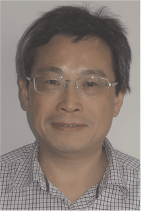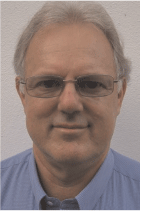Unconventional gas prospectivity of the Cooper Basin
Lisa Hall A , Tony Hill B , Liuqi Wang A , Dianne Edwards A , Tehani Kuske A , Alison Troup C and Chris Boreham AA Geoscience Australia.
B Department of State Development, South Australia.
C Geological Survey of Queensland.
The APPEA Journal 55(2) 428-428 https://doi.org/10.1071/AJ14063
Published: 2015
Abstract
The Cooper Basin is an Upper Carboniferous–Middle Triassic intracratonic basin in northeast SA and southwest Queensland. The basin is Australia’s premier onshore hydrocarbon-producing province and is nationally significant due to its provision of domestic gas for the east coast gas market.
Exploration activity in the region has recently expanded with numerous explorers pursuing newly identified unconventional hydrocarbon plays. While conventional gas and oil prospects can usually be identified by 3D seismic, the definition and extent of the undiscovered unconventional gas resources in the basin remain poorly understood.
This extended abstract reviews the hydrocarbon prospectivity of the Cooper Basin with a focus on unconventional gas resources. Regional basin architecture, characterised through source rock distribution and quality, demonstrates the abundance of viable source rocks across the basin. Petroleum system modelling, incorporating new compositional kinetics, source quality and total organic carbon (TOC) map, highlight the variability in burial, thermal and hydrocarbon generation histories between depocentres.
The study documents the extent of a number of unconventional gas play types, including the extensive basin-centred and tight gas accumulations in the Gidgealpa Group, deep-dry coal gas associated with the Patchawarra and Toolachee formations, as well as the less extensive shale gas plays in the Murteree and Roseneath shales.

Lisa Hall is a senior research scientist in Geoscience Australia’s Energy Resources Group. Her current research is focused on hydrocarbon prospectivity assessments and petroleum systems modelling in a variety of Australian basins. Lisa holds an MSc in Geology and Geophysics from Cambridge University (1999) and a DPhil in structural geology and neotectonics from Oxford University (2003). Member: PESA. |

Tony Hill graduated with a BSc in applied geology from the Royal Melbourne Institute of Technology. He has more than 30 years’ experience in petroleum system analysis and has worked in hydrogeology and geothermal energy. He is principal geologist in the energy resources division of the South Australian Department of State Development (DSD). Member: PESA. |

Liuqi Wang is a reservoir modeller at Geoscience Australia. He has a bachelor’s and a master’s degrees in petroleum geology and a PhD in petroleum engineering. Liuqi was an academic teacher on sedimentology and petroleum geology at the University of Petroleum, China, from 1990 to 1996. He worked at Geo Visual Systems Australia as a principal geologist/research scientist from 2000 to 2003 and was then a research fellow at the University of New South Wales. He joined Geoscience Australia as a senior petroleum geologist/engineer in 2008. His research focuses on the integrated reservoir study for both conventional and unconventional reservoirs, including reservoir geology/geophysics, formation evaluation, modelling with geostatistics, artificial intelligence and dynamic reservoir simulation. |

Dianne Edwards is a senior research scientist at Geoscience Australia in the energy systems group of the resources division. Her focus is on defining the petroleum systems of Australia’s petroliferous basins and determining the petroleum prospectivity of unconventional hydrocarbons in the onshore basins. She is now undertaking organic geochemical studies on crude oils, gases and source rocks of the Georgina, Cooper and Browse basins. She has extensive experience on the petroleum systems of the North West Shelf, Canning and Otway basins. Dianne received her BSc (Hons) degree in geology and MSc in organic petrology and organic geochemistry from the University of Newcastle-upon-Tyne, UK. She was awarded her PhD from the University of Adelaide. Member: PESA and the European Association of Organic Geochemists. |

Tehani Kuske is a geoscientist at Geoscience Australia and part of the energy systems group in the resources division. She gained her MSc (Hons) in micrometeorology from the University of Waikato, New Zealand. Tehani has been with Geoscience Australia since 2009 and has been involved with various projects, including greenhouse gas monitoring, petroleum acreage products and onshore basin studies. She is involved in onshore energy systems studies and is interested in petroleum systems modelling. Member: PESA. |

Alison Troup graduated from the University of Queensland with a BSc (Hons) in geology. She joined the Geological Survey of Queensland’s Energy Geosciences group in 2010 and has participated in the North West Queensland Minerals and Energy Province report and the Coastal Geothermal Energy Initiative drilling program. Alison is involved in the assessment of the unconventional petroleum resources in Queensland. |

Chris Boreham gained his PhD in inorganic chemistry at the Australian National University and has worked at Geoscience Australia since 1980. He is an internationally recognised petroleum geochemist with more than three decades of experience in the application of organic geochemistry to the evolution of oil and gas in sedimentary basins. More recently, he has extended these geochemical studies to unconventional petroleum (coal seam methane, shale gas and oil). He also leads key aspects of the CO2CRC’s studies on the injection of CO2 into a depleted natural gas field and a saline aquifer. |
References
Boreham, C.J., and Hill, A.J., 1998—Source Rock distribution and hydrocarbon geochemistry. In: Gravestock, D.I., Hibburt, J.E. and Drexel, J.F. (Eds), Petroleum Geology of South Australia. Volume 4: Cooper Basin. Adelaide: Department of Primary Industry and Resources. 129–42.Charpentier, R.R., and Cook, T.A., 2011—USGS methodology for assessing continuous petroleum resources. Virginia: U.S. Geological Survey open-file report 2011-1167, 75.
Deighton, I., Draper, J.J., Hill, A.J., and Boreham, C.J. (2003). A hydrocarbon generation model for the Cooper and Eromanga Basins. APPEA Journal 43, 422–51.
Goldstein, B., Menpes, S., Hill, A., Wickham, A., Alexander, E., Jarosz, M., Pepicelli, D., Malavazos, M, Staritski, K., Taliangis, P., Coda, J., Hill, D., and Webb, M., 2012—Roadmap for Unconventional Gas Projects in South Australia. Chapter 4, Unconventional Gas Projects. Accessed 26 June 2014. <http://www.pir.sa.gov.au/__data/assets/pdf_file/0004/178348/Chapter_4.pdf>.
Mahlstedt, N., Di Primio, R., and Horsfield, B., 2014—On the Shale Gas Potential of the Cooper Basin. Department of State Development Report. Report to Geoscience Australia and Department for Manufacturing, Innovation, Trade, Resources and Energy. Record 2015/in press. Canberra: Geoscience Australia.
Menpes, S., Hill, A., and Pepicelli, D., 2013—Characteristics of the Gidgealpa Group Composite Resource Play in the Cooper Basin, South Australia. Unconventional Resources Technology Conference, Denver, Colorado, 12–14 August, URTeC1582655.
Middleton, A.W., Tonguç Uysal, I., Bryan, S.E., Hall, C.M., and Golding, S.D. (2014). Integrating 40Ar–39Ar, 87Rb–87Sr and 147Sm–143Nd geochronology of authigenic illite to evaluate tectonic reactivation in an intraplate setting, central Australia. Geochimica et Cosmochimica Acta 134, 155–74.
Queensland Government, 2002—Geology of the Cooper and Eromanga Basins, Queensland Mineral and Energy Review Series (Ed: J.J. Draper). Department of Natural Resources and Mines, DVD.
South Australian Resources Information Geoserver (SARIG), 2015—South Australian Resources Information Geoserver. Accessed 5 January. <http://www.sarig.dmitre.sa.gov.au>.
Sun, X., and Camac, B., 2004—Cooper Basin Electrofacies Mapping Project South Australia. Report Book. SA: Government of South Australia, Department of State Development.


